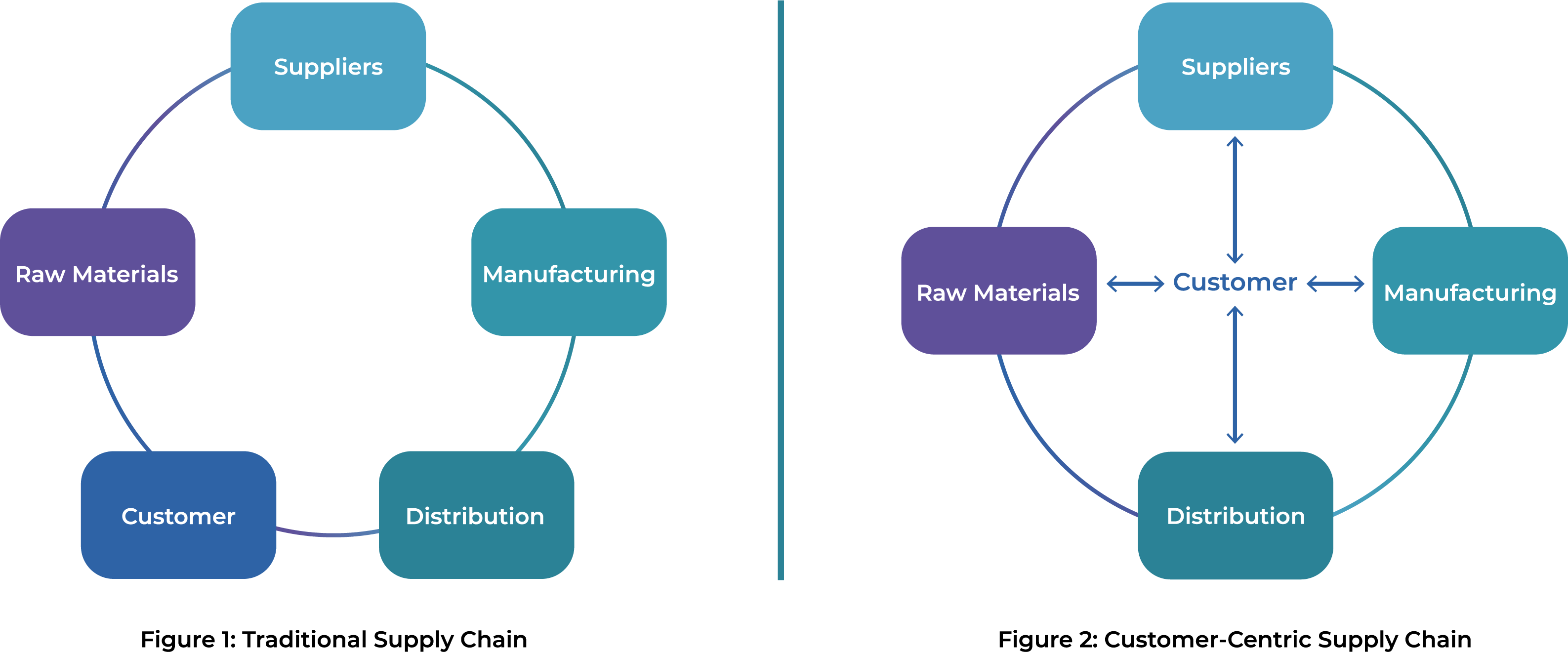I was fortunate to join the Arkieva team in strategy sessions with our Belgium team and European partner – Solventure. Since this was my first time visiting Belgium, I couldn’t help but notice the picturesque sceneries, the architecture, and how beautifully meals were presented. I started pondering if the locals saw all the details that I did on my trip on a day-to-day basis. Perhaps if I moved to Belgium, with time the details that I noticed during my trip would be minuscule because they would be the norm.
Similarly, when it comes to customer-centric supply chain planning, technology advancement has led to a heightened customer expectation. At the basic level, a client would expect that orders placed, would be fulfilled quickly, delivered on-time and with no compromise on quality. Therefore, a true customer-centric supply chain initiative will need to go beyond the norm.
Customer-centric manufacturing companies go a step further to delight their customers; going beyond the basic customer expectations by using more accurate predictive analysis such as looking at market trends, and employing social listening, to determine what customers need even before it’s requested. Customer-centricity requires a continuous improvement plan that is centered around your customers and customer data segmentation.
What is a Customer-Centric Supply Chain?
Customer-centric supply chain refers to all customer experience improvement initiatives embedded in the process of moving finished products from suppliers to customers. The key ingredient for establishing a true customer-centric supply chain comes with embedding, or integrating, real-time market signals and customer information into all supply chain activities and processes. Businesses that are customer-centric are often found at the forefront of innovation in the marketplace simply because they pay attention to the extra details that others don’t.
Key Elements of Customer-Centric Supply Chain Planning
While a residual value of having a customer-centric supply chain is usually an increase in bottom-line results, when implementing a customer-centric supply chain it’s essential not to place too much emphasis on increasing profits. The concept with this is simple – delight your customers, and all others will follow, including soaring profits.
Traditional Supply Chain Model vs. Customer- Centric Supply Chain

Note: Figure 1 and 2 demonstrate a simplistic high-level view of a supply chain process.
The traditional way of thinking about supply chain management usually has the customer at the receiving end of the process (as shown in figure 1). Customer data may not be the driving force during the supply chain process.
In a customer-centric supply chain model (as shown in figure 2), customer information, buying patterns, and changing customer needs are infused at every stage. At the supplier stage, predictive analytics based on customer buying patterns is used to determine when and how many raw materials are needed. Manufacturers only keep the optimal level of inventory at the locations needed instead of spreading inventory across multiple locations. During the manufacturing process, customer feedback and market trends acquired through social listening is used to improve quality and drive innovation. Similarly, customers are offered multiple distribution channels including in-store delivery, same-day pickup, and overnight shipping, among others. And most importantly, deliveries are made on time to meet or exceed customer expectations.
Customer-centric supply chain requires creating a personalized customer experience that can only be achieved by having dynamic access to customer data throughout the entire supply chain process. Using real-time data for demand sensing provides customers with top of the line service, repeat purchases and at the end of the day, an increase in sales and bottom-line results. Organizations committed to achieving this goal never throw caution to the wind by ignoring the details.






